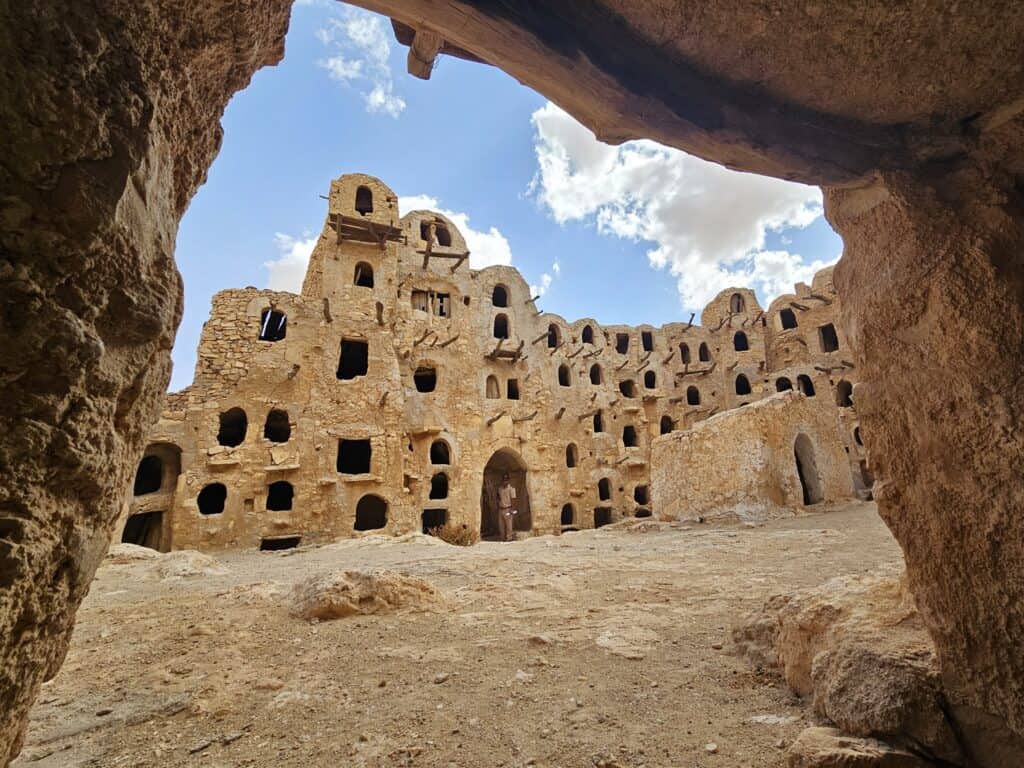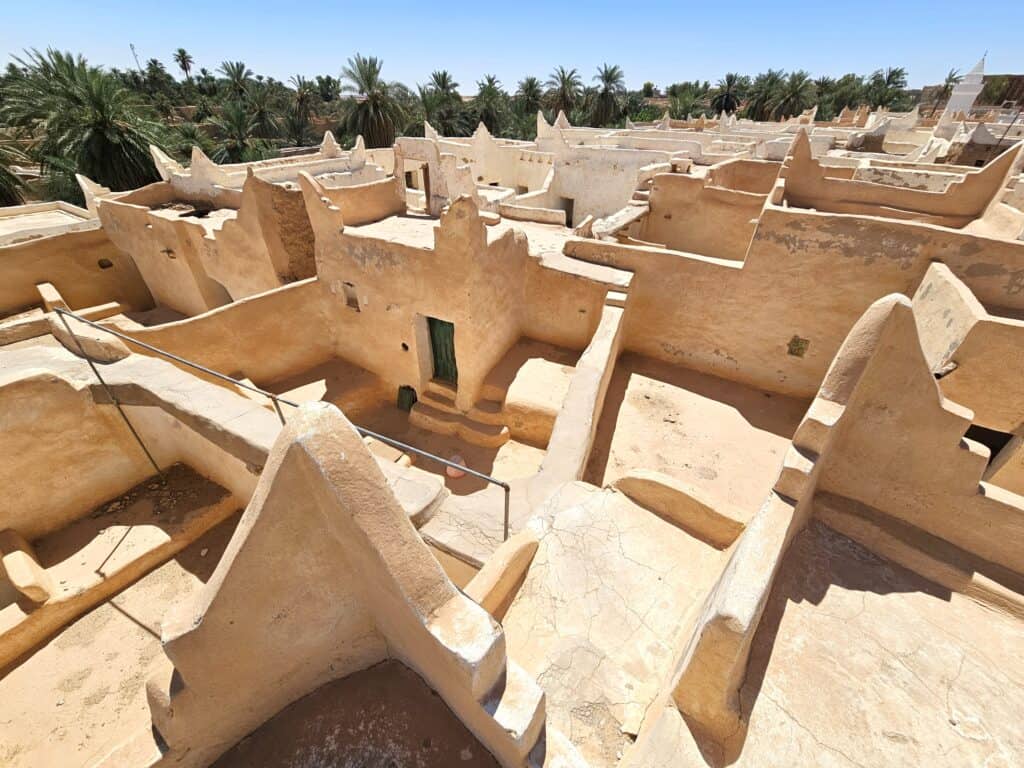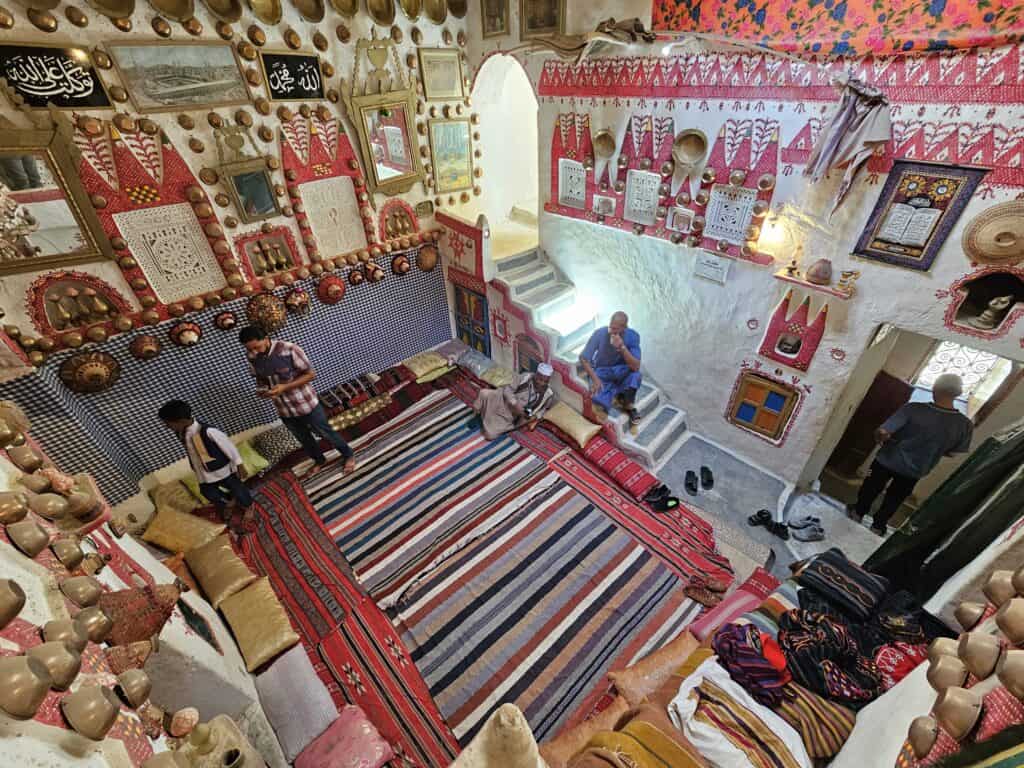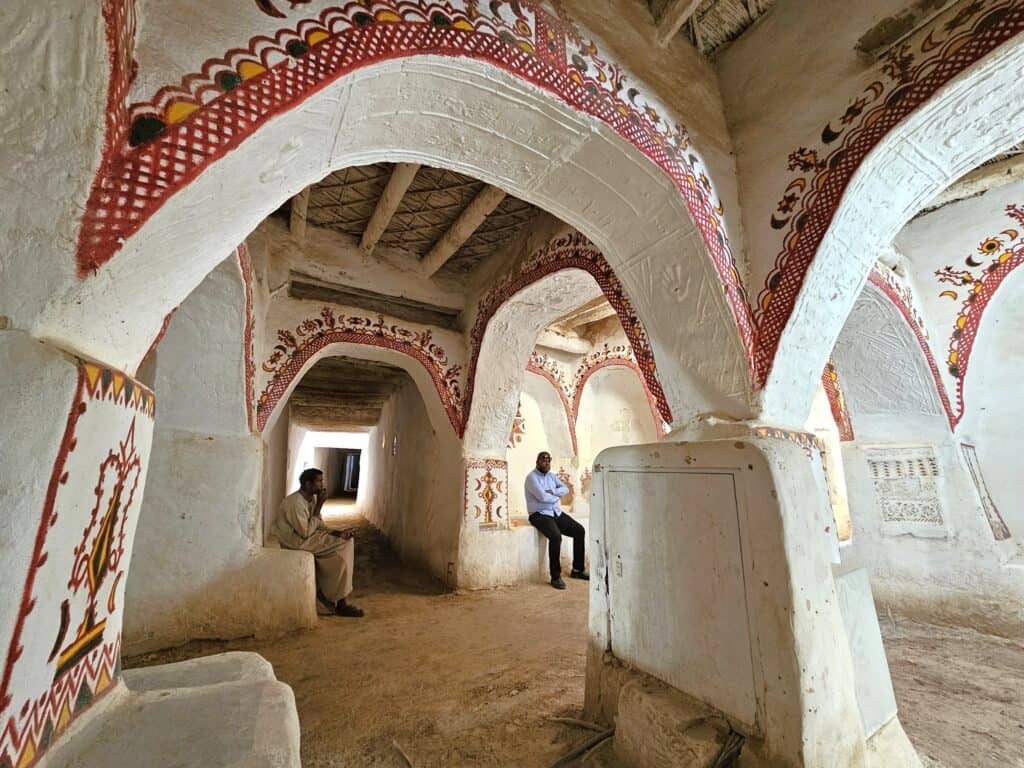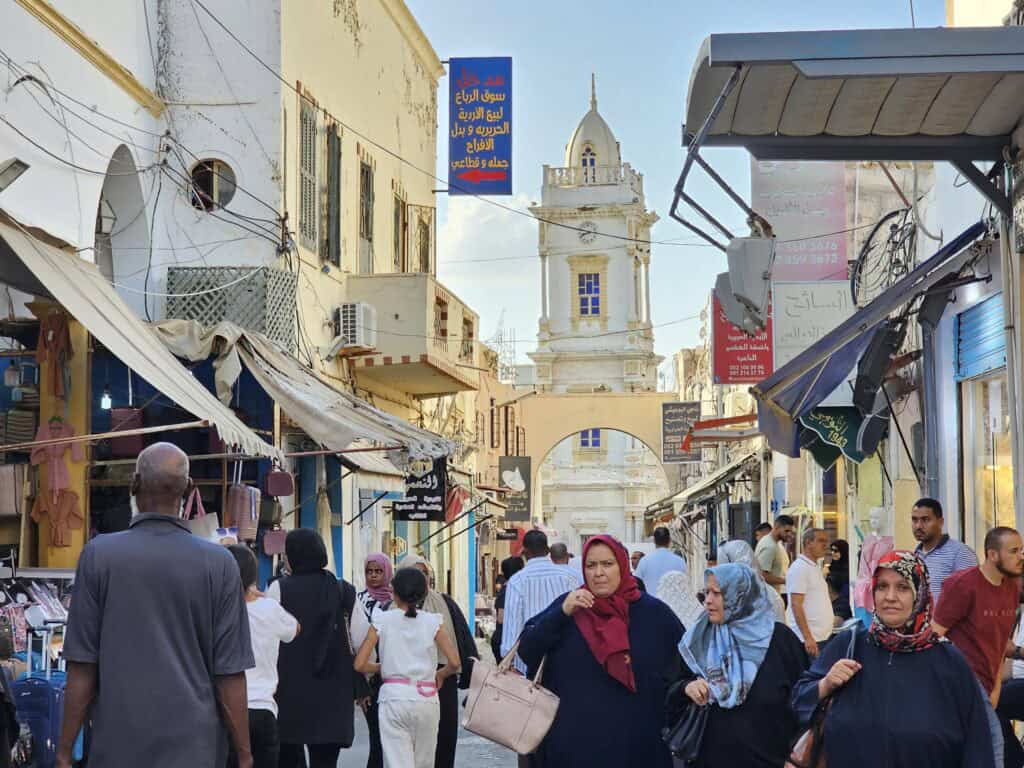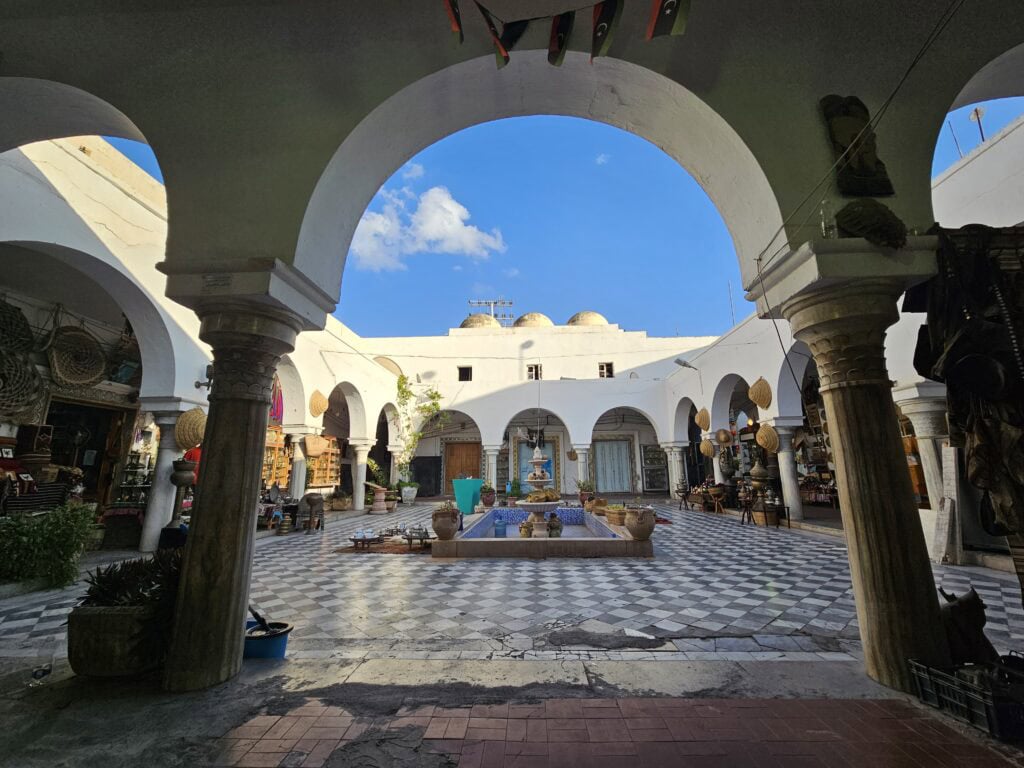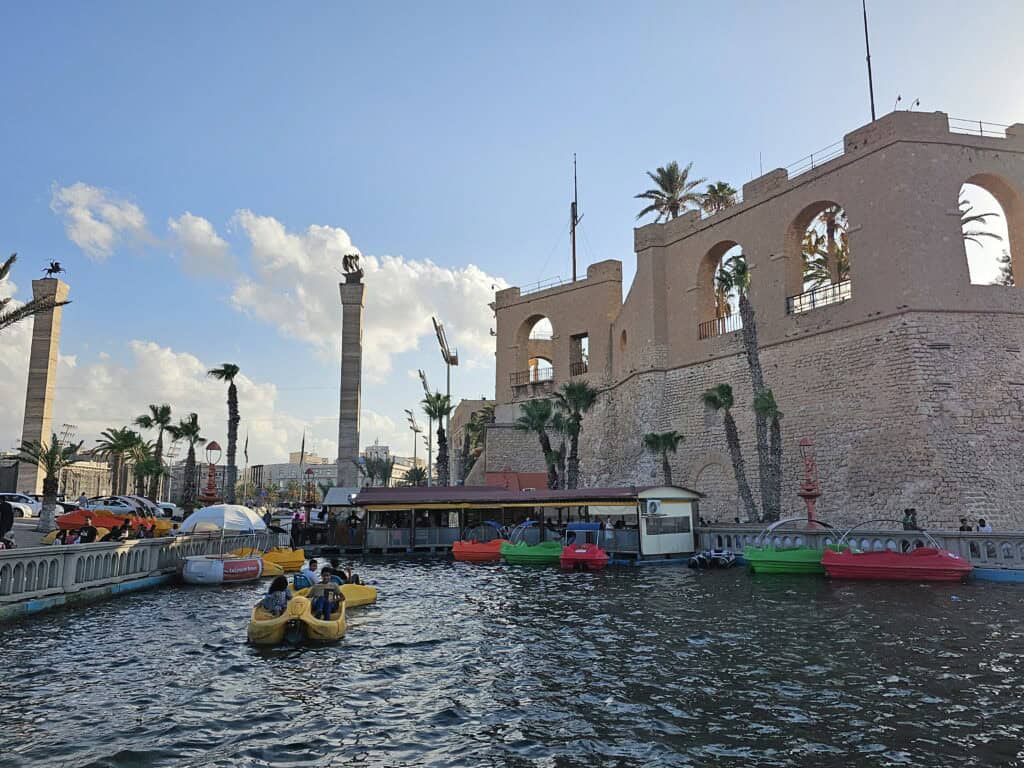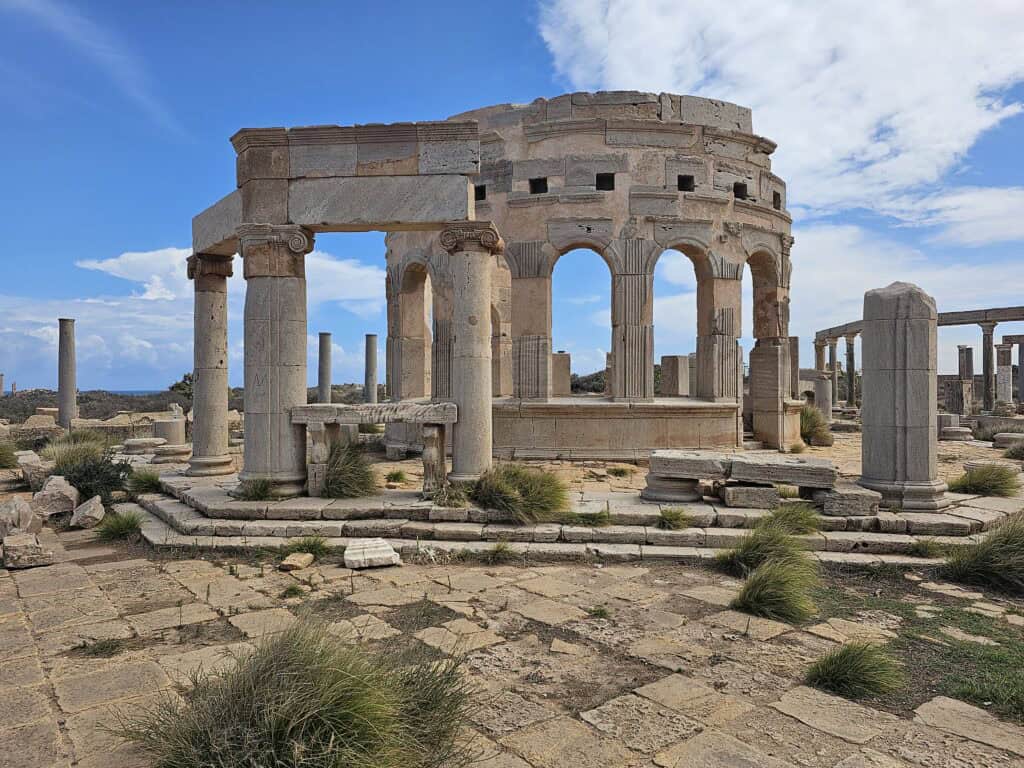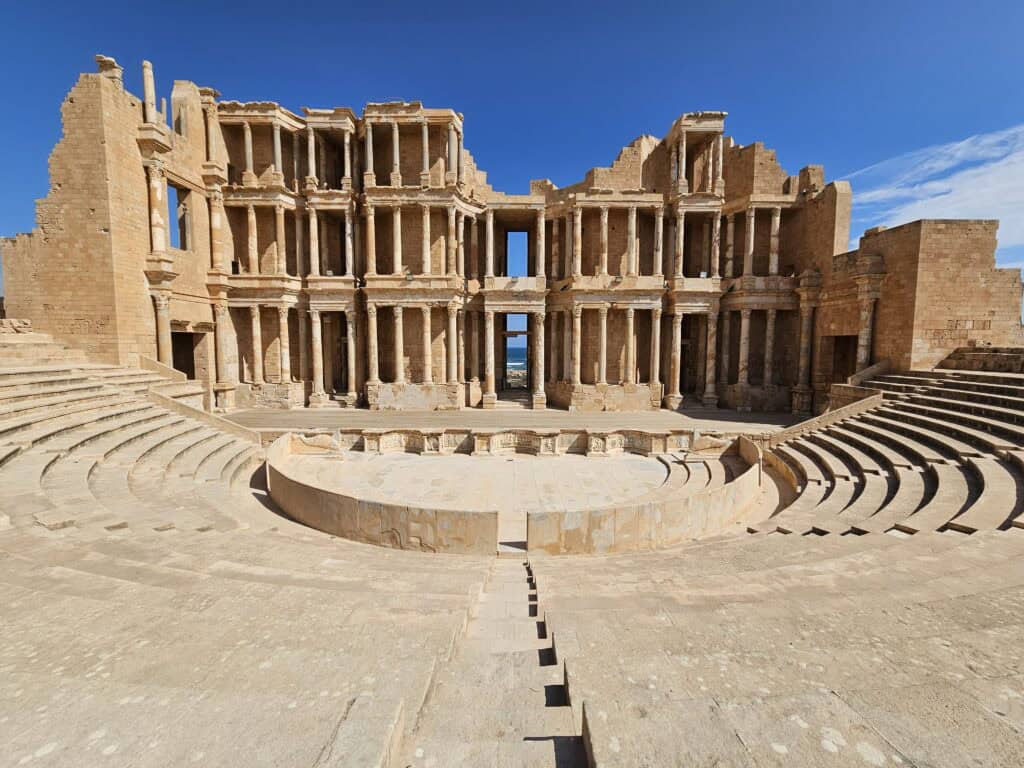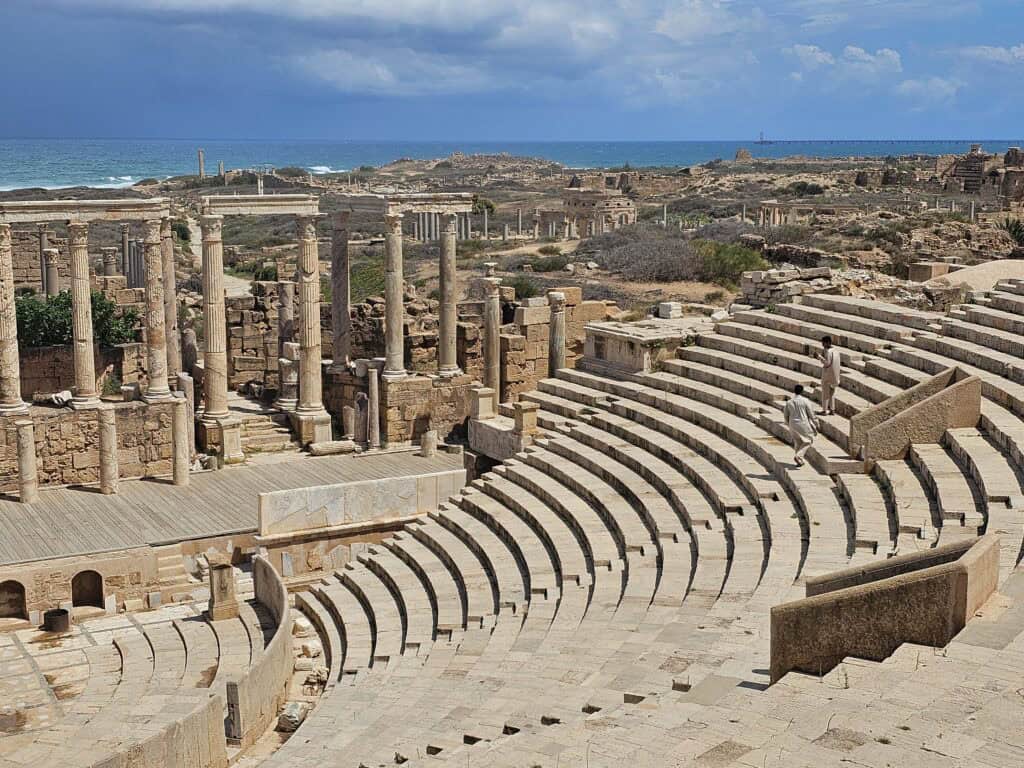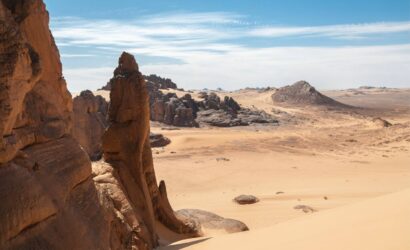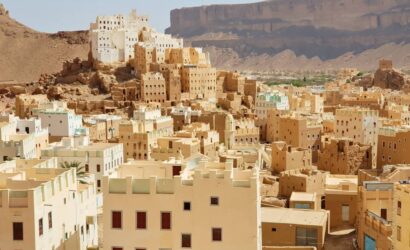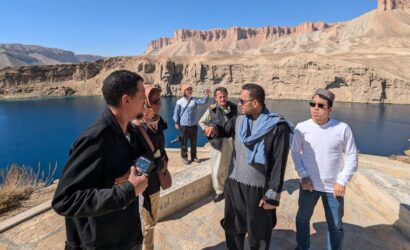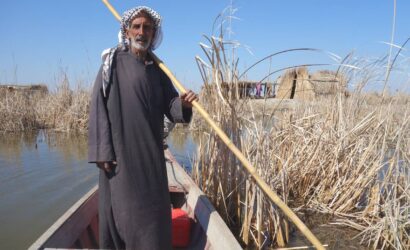This 13-day expedition across Libya offers a comprehensive north-to-south journey through the country’s most iconic historical, cultural, and natural landscapes. From the Mediterranean ruins of the Greek Pentapolis to the desert heart of the Fezzan region, the itinerary connects Libya’s rich coastal heritage with its remote Saharan traditions and archaeological depth.
The tour begins in Tripoli, the bustling capital layered with Ottoman, Italian, and ancient Roman heritage, before flying east to explore Cyrenaica—once the seat of the Greek Pentapolis. Travelers will visit Apollonia, Cyrene, and Ptolemais, discovering temples, Byzantine churches, and city ruins that reflect centuries of Greco-Roman influence. A return to Tripoli sets the stage for a southern shift into the Fezzan.
In the Sahara, the journey delves into the spectacular Ubari Lakes, prehistoric rock art of Wadi Mathendous, and the archaeological site of Germa—once capital of the Garamantian Kingdom. Nights in desert camps offer both silence and stars, making this segment ideal for adventurers and culture-seekers alike.
The final portion ventures west into Tripolitania’s Jebel Nafusa and the oasis city of Ghadames, a UNESCO World Heritage Site famed for its whitewashed Saharan architecture. Here, travelers enjoy a traditional 4WD desert safari among dunes and abandoned forts, along with a Tuareg fire camp experience. The tour concludes with visits to the monumental Roman cities of Leptis Magna and Sabratha, bringing full circle the narrative of Libya as a land of layered civilizations—Greek, Roman, Berber, Byzantine, Islamic, and Saharan.
Itinerary:
- Day 1 » Tripoli morning arrival » Airport Meet & Greet » Hotel transfer » Tripoli Old City Tour (Martyr’s Square, Arch of Marcus Aurelius, Red Castle, Bab Al-Menshia Street, Saraya Market, Gurgi Mosque, House of Yusuf Karamanli)
- Day 2 » Tripoli » Airport transfer » Flight to Al Abraq » Susah (Ancient city of Apollonia) » Al Bayda
- Day 3 » Al Bayda » Archaeological Site of Cyrene » Ras Al Hilal (Byzantine Church) » Al-Athrun (Byzantine Churches) » Al Bayda
- Day 4 » Al Bayda » Qsar Libya Museum (West Church, East Church), Tolmeita (Ancient City of Ptolemais) » Benghazi Airport transfer » Flight to Tripoli
- Day 5 » Tripoli morning rest » Airport transfer » Flight to Sebha
- Day 6 » Sebha » Ubari Lakes Region » Ovenight in Desert Camp
- Day 7 » Ubari » Wadi Mathendous » Ovenight in Desert Camp
- Day 8 » Germa City Tour » Airport transfer » Flight to Tripoli » Hotel transfer
- Day 9 » Tripoli » Jebel Nafusa (Qasr al-Hajj, Kabaw Qasr) » Ghadames
- Day 10 » Ghadames Old City Tour » 4WD Desert Safari (Ras Al-Ghoul Fort, Sand Dunes, Touareg Fire Camp)
- Day 11 » Ghadames » Al Majabrah road » Bu Gheilan (Troglodyte Houses) » Tripoli
- Day 12 » Tripoli » Leptis Magna » Tripoli Corniche Tour (Coastal road, Corniche, Algiers Square)
- Day 13 » Tripoli » Sabratha » Airport transfer » Tripoli afternoon departure // End of our services
Our tours in Libya and personalized itineraries has been thoughtfully designed around Turkish Airlines daily flights from Istanbul and Tripoli. Specifically, we have aligned our schedule with the flight arriving at Mitiga International Airport (MJI) at 10:05 AM, ensuring a comfortable morning start to the tour activities upon your arrival. On the departure day, our tour conveniently concludes in time for the Turkish Airlines flight departing from Tripoli at 12:05 PM, allowing travelers a relaxed morning transfer from the hotel to the airport.
Interested in exploring available flight options to Tripoli? Click the boxes below to view more details.
Your morning arrival in Tripoli can be arranged with airlines such as Turkish Airlines, Libyan Wings, Afriqiyah Airways, EgyptAir, and ITA Airways. If your flight timing is different, please inform us so we can assist with logistics. Remember, the Tripoli Old City Tour begins at 14:00.
| Origin City | Airline | Flight No. | Departure Airport | Arrival Tripoli | Arrival Time |
|---|---|---|---|---|---|
| 🇹🇷 Istanbul | Turkish Airlines | TK639 | Istanbul (IST) | Mitiga (MJI) | 10:30 AM |
| 🇹🇷 Istanbul | Libyan Wings | YL101 | Istanbul (IST) | Mitiga (MJI) | 06:00 AM |
| 🇪🇬 Cairo | EgyptAir | MS831 | Cairo (CAI) | Mitiga (MJI) | 09:40 AM |
| 🇹🇳 Tunis | Afriqiyah Airways | 8U451 | Tunis–Carthage (TUN) | Mitiga (MJI) | 11:15 AM |
| 🇹🇳 Tunis | Libyan Wings | YL801 | Tunis–Carthage (TUN) | Mitiga (MJI) | 11:30 AM |
| 🇮🇹 Rome | ITA Airways | AZ868 | Rome–Fiumicino (FCO) | Mitiga (MJI) | 12:10 PM |
This table is illustrative and approximate. Flight schedules can and will change without prior notice, so it serves only as a general guideline for planning purposes. Always confirm your flights directly with the airline.
Your morning departure from Tripoli can be arranged with airlines such as Turkish Airlines, Libyan Wings, Afriqiyah Airways, EgyptAir, and MedSky Airways. Should your flight differ, please inform us to help coordinate logistics. Remember, hotel check-out time is at 12:00.
| Destination City | Airline | Flight No. | Departure Tripoli | Arrival Airport | Arrival Time |
|---|---|---|---|---|---|
| 🇹🇷 Istanbul | Turkish Airlines | TK641 | 12:05 PM | Istanbul Airport (IST) | 04:20 PM |
| 🇹🇷 Istanbul | Libyan Wings | YL100 | 07:00 AM | Istanbul Airport (IST) | 10:15 AM |
| 🇮🇹 Rome | MedSky Airways | BM0522 | 08:50 AM | Rome–Fiumicino Airport (FCO) | 09:50 AM |
| 🇹🇳 Tunis | Libyan Wings | YL800 | 07:55 AM | Tunis–Carthage Airport (TUN) | 09:05 AM |
| 🇹🇳 Tunis | Afriqiyah Airways | 8U450 | 10:30 AM | Tunis–Carthage Airport (TUN) | 11:40 AM |
| 🇪🇬 Cairo | EgyptAir | MS832 | 10:40 AM | Cairo International (CAI) | 01:25 PM |
This table is illustrative and approximate. Flight schedules can and will change without prior notice, so it serves only as a general guideline for planning purposes. Always confirm your flights directly with the airline.
Trip Info
-
Tripoli
-
Tripoli
-
4★ hotels with breakfast
-
Guide and Tourist Police at all time
-
Private sedan, SUV, or van with air conditioning
-
Airport meet & greet with assistance through formalities
-
Tripoli, Cyrene, Apollonia, Tolmeita, Leptis Magna, Sabratha, Jebel Nafusa, Ubari Lakes, Bu Gheilan, Ghadames
-
LOI and visa included — full service for fast e-Visa in 10 days.
Libya Itinerary
Upon morning arrival at Mitiga International Airport, you will be met by our local team and transferred to your hotel in Tripoli. After a short rest and briefing, the program begins with an introductory walking tour through the capital’s historic center.
Starting at Martyr’s Square, formerly known as Green Square, you’ll walk toward the Arch of Marcus Aurelius, the only remaining Roman monument in Tripoli, built around 165 CE. From there, continue to the Red Castle (Assaraya al-Hamra), a fortress complex that has seen various rulers including the Spanish, Ottomans, and Italians. Then head into the medina via Bab Al-Menshia Street, exploring the Saraya Market, the Gurgi Mosque with its octagonal minaret from 1833, and the Ottoman-era House of Yusuf Karamanli.
This visit helps you see how history, religion, and daily life connect here, with sites still used by locals today.
Travel Distance & Time:
Airport to city center – Approx. 30 min transfer
Historical Context:
Tripoli's core developed under various empires — Phoenician, Roman (as Oea), Islamic dynasties, and colonial powers. The Arch of Marcus Aurelius survives from Roman Oea, while the Karamanli family ruled in the 18th–19th centuries under Ottoman suzerainty.
Curiosities & Local Facts:
– The Gurgi Mosque is known for its unique blend of Islamic and Andalusian architectural elements.
– Bab Al-Menshia was a key commercial entrance to the medina, historically linking it to sea trade routes.
5 Key Highlights:
- Explore Martyr’s Square and colonial-era architecture
- Visit the Arch of Marcus Aurelius, Tripoli’s oldest monument
- Walk through the Red Castle exterior and surrounding Ottoman quarters
- See the elegant 19th-century Gurgi Mosque
- Discover Tripoli’s medina streets and local market life
Important for You:
Tripoli medina, Arch of Marcus Aurelius, Karamanli dynasty
After breakfast, we transfer to Mitiga Airport for a domestic flight to Al Abraq in eastern Libya. Upon landing, our driver and guide meet you for a short road journey toward the Mediterranean coast, arriving at the ruins of Apollonia near the town of Susah.
Apollonia served as the main port of Cyrene and was established by Greek settlers in the 7th century BCE. Walking among its coastal remains, you’ll see the theater facing the sea, Byzantine-era basilicas, and Roman cisterns. The site was later fortified during the Byzantine period, as seen in the thick city walls and partially preserved baths. Apollonia was also the seat of the Byzantine governor during the 6th century CE.
This stop gives context to how ancient trade shaped the region, especially between inland Cyrene and maritime routes. After the visit, we drive inland to Al Bayda for dinner and overnight.
Travel Distance & Time:
Flight: Tripoli to Al Abraq – Approx. 1.5 hours
Drive: Al Abraq to Susah – Approx. 30 km / 40 min
Susah to Al Bayda – Approx. 25 km / 30 min
Historical Context:
Apollonia was part of the Pentapolis, a group of five major Greek cities in Cyrenaica. Its prominence rose during Roman and later Byzantine rule, when it became a regional capital until it was damaged by earthquakes and eventually abandoned after the Arab expansion in the 7th century.
Curiosities & Local Facts:
– Apollonia’s theater is unique in Libya for facing directly toward the Mediterranean Sea.
– Archaeologists found Greek, Roman, and Byzantine layers in the same structures, showing how the city evolved over centuries.
5 Key Highlights:
- Domestic flight from Tripoli to Libya’s eastern region
- Explore the coastal ruins of Apollonia near Susah
- View 6th-century Byzantine basilicas and city walls
- Learn about the trade role between Apollonia and Cyrene
- Overnight in the highland town of Al Bayda
Important for You:
Apollonia archaeological site, Byzantine basilicas Libya, Greek port cities
After breakfast, we depart Al Bayda heading east to visit the UNESCO-listed ruins of Cyrene, the most important Greek city in Libya. Situated on a limestone plateau overlooking the Mediterranean, Cyrene was founded in 631 BCE by settlers from Thera (modern Santorini).
Walking through the site, you’ll see the Temple of Zeus—one of the largest Greek temples outside Greece—alongside the Sanctuary of Apollo, the Agora, and a Roman-era amphitheater. From here, we drive down toward the coast to visit the cliffside Byzantine Church of Ras Al Hilal, built in the 6th century CE. The final stop is Al-Athrun, where two more Byzantine churches sit on a rocky terrace overlooking the sea, featuring mosaics and remnants of Christian iconography.
You’ll walk through places that still carry the marks of past empires, layered visibly in the ruins and their coastal surroundings.
Travel Distance & Time:
Approx. 150 km – 3.5 hours drive total
Historical Context:
Cyrene was the capital of Cyrenaica and became a Roman province in 74 BCE. It remained significant through the Byzantine period, especially as a Christian center. The churches at Ras Al Hilal and Al-Athrun were part of a late antique Christian revival before Arab expansion.
Curiosities & Local Facts:
– The Temple of Zeus at Cyrene is larger than the Parthenon in Athens.
– Al-Athrun’s churches show early attempts to adapt basilica plans to rugged coastal terrain.
5 Key Highlights:
- Explore Cyrene, the largest Hellenistic site in Libya
- Visit the Temple of Zeus and Apollo Sanctuary
- See the cliffside Byzantine Church at Ras Al Hilal
- Discover coastal Christian ruins at Al-Athrun
- Return to Al Bayda for overnight stay
Important for You:
Cyrene ruins Libya, Byzantine coastal churches, Temple of Zeus Cyrene
We depart early for Qsar Libya, a small village housing a museum with floor mosaics from the nearby Byzantine churches—West and East Church—built in the 6th century CE. These depict mythological figures, animals, and Christian symbols, remarkably preserved and displayed on-site.
We then continue to Tolmeita, the ancient city of Ptolemais, founded by the Ptolemies in the 3rd century BCE. It later became a key Roman city in Cyrenaica. Here you’ll walk among public baths, Roman streets, and an expansive theater. After lunch, we drive to Benghazi Airport for a domestic flight back to Tripoli.
This day links religious and civic history, from mosaics to Roman town planning.
Travel Distance & Time:
Al Bayda – Qsar Libya – Tolmeita – Benghazi: Approx. 230 km – 4.5 hours
Flight: Benghazi to Tripoli – Approx. 1.5 hours
Historical Context:
Ptolemais was the capital of Cyrenaica during the later Roman period and became a major Christian episcopal seat. Qsar Libya’s mosaics date from Emperor Justinian’s reign and reflect North African Christian art.
Curiosities & Local Facts:
– Qsar Libya mosaics were discovered in 1950 during road construction.
– The Roman cisterns at Ptolemais were among the largest in North Africa.
5 Key Highlights:
- View rare 6th-century mosaics at Qsar Libya
- Explore ancient Ptolemais with its Roman theater and baths
- Learn about Cyrenaica’s Christian heritage
- Scenic drive across Libya’s eastern highlands
- Return flight to Tripoli for overnight
Important for You:
Qsar Libya mosaics, Ptolemais ruins, Roman cities Cyrenaica
The morning is reserved for rest or optional walks near the hotel. After lunch, we transfer to the airport for a flight to Sebha in southwestern Libya, the gateway to the Fezzan region.
Upon arrival in Sebha, we transfer to our local guesthouse and prepare for the upcoming desert journey into the Ubari Sand Sea.
This transition day sets the stage for exploring Libya’s Sahara region and ancient desert cultures.
Travel Distance & Time:
Tripoli – Sebha Flight: Approx. 2 hours
Historical Context:
Sebha has long served as a hub between North Africa and sub-Saharan trade routes. It is inhabited mainly by Tuareg and Arab populations and sits near prehistoric rock art zones.
Curiosities & Local Facts:
– Sebha played a strategic role during the Italian colonial period due to its location.
– The area is known for date farming and Saharan desert markets.
5 Key Highlights:
- Morning free time in Tripoli
- Domestic flight to Fezzan region
- Arrival in Sebha, capital of southwestern Libya
- Brief orientation to desert journey
- Overnight in Sebha area
Important for You:
Sebha Libya, Fezzan desert, Libya internal flight
We begin our desert expedition from Sebha, driving deep into the Ubari Sand Sea. After hours of navigating dunes and dry basins, we reach the Ubari Lakes—remnants of a prehistoric wet climate. The most famous is Lake Gaberoun, surrounded by palm trees and the ruins of a former Tuareg settlement.
In the afternoon, we explore the lake area on foot and relax with tea among the dunes. Dinner and overnight at a desert camp near the lake.
This visit reveals how ancient climate shifts transformed Sahara landscapes and supported human life.
Travel Distance & Time:
Sebha – Ubari Lakes: Approx. 160 km – 5 hours with off-road portions
Historical Context:
The Ubari Lakes are part of the Idehan Ubari, a region once covered by a vast lake system. Tuareg people lived here seasonally until the 20th century. Today, the lakes are shrinking due to climate change.
Curiosities & Local Facts:
– Lake Gaberoun has a high salt content, allowing effortless floating.
– Abandoned adobe buildings near the lake were once used by caravan traders.
5 Key Highlights:
- Scenic drive into Ubari Sand Sea
- Visit Lake Gaberoun and nearby lakes
- See abandoned Tuareg buildings
- Traditional dinner and tea in desert camp
- Overnight stay under stars
Important for You:
Ubari Sand Sea, Lake Gaberoun, Tuareg Sahara culture
We leave the lake region and continue across the desert to Wadi Mathendous, one of Libya’s most important prehistoric rock art sites. The wadi features carvings of elephants, giraffes, and crocodiles—evidence of a once green Sahara.
After lunch in the area, we explore the rock panels carved into sandstone cliffs, estimated to be over 8,000 years old. In the late afternoon, we return to camp for dinner and another night in the Sahara.
This visit shows how climate and human expression evolved in the prehistoric Sahara.
Travel Distance & Time:
Approx. 120 km – 4 hours off-road driving
Historical Context:
Wadi Mathendous is part of the Acacus and Messak regions, home to Neolithic carvings and paintings. These artworks depict now-extinct fauna and early pastoral life.
Curiosities & Local Facts:
– Some carvings depict humans and animals interacting, suggesting spiritual beliefs.
– The site is remote, with no infrastructure—access requires 4WD and local knowledge.
5 Key Highlights:
- Off-road journey to remote rock art valley
- View Neolithic petroglyphs of animals and humans
- Learn about early Sahara ecology
- Desert picnic lunch and exploration
- Second night in desert camp
Important for You:
Wadi Mathendous, Sahara rock art, prehistoric Libya
We begin the day with a visit to the ruins of Germa, once the capital of the Garamantian Kingdom. The Garamantes were a Saharan civilization active between 500 BCE and 700 CE, known for building qanat irrigation systems and controlling trans-Saharan trade routes.
You’ll walk through the adobe ruins, see ancient tombs, and visit the small on-site museum. Later in the afternoon, we transfer to Sebha Airport for the flight back to Tripoli and overnight hotel transfer.
This stop gives insight into a desert-based civilization often overlooked in classical histories.
Travel Distance & Time:
Germa – Sebha: Approx. 150 km – 3 hours
Flight: Sebha to Tripoli – Approx. 2 hours
Historical Context:
The Garamantes traded with the Roman Empire and were noted in texts by Herodotus. Their use of underground irrigation was revolutionary for the desert environment.
Curiosities & Local Facts:
– Qanat systems in Germa still influence farming practices in the region.
– Some tombs were reused across generations, showing long-term settlement.
5 Key Highlights:
- Visit to ancient Garamantian city of Germa
- See desert tombs and water systems
- Small museum with local finds
- Return flight to Tripoli
- Overnight in Tripoli
Important for You:
Garamantian civilization, Germa ruins Libya, desert irrigation history
After breakfast, we depart Tripoli heading southwest into the Jebel Nafusa mountains, a Berber heartland. Our first stop is Qasr al-Hajj, a fortified granary built in the 13th century CE, known for its circular structure and double-story grain cells used by the local community.
We continue to the mountain village of Kabaw, where we explore another qasr (fortified storehouse) and observe typical Amazigh architecture. In the afternoon, we descend toward the desert fringe, arriving in Ghadames, a historic oasis town near the Algerian border, for dinner and overnight.
This journey helps you understand how mountain and desert communities adapted their architecture to both security and climate.
Travel Distance & Time:
Tripoli – Qasr al-Hajj – Kabaw – Ghadames: Approx. 650 km – 8.5 hours total
Historical Context:
The fortified granaries were communal storage structures used by Amazigh tribes to protect food supplies and valuables. Ghadames has been inhabited since Roman times and later became a major caravan hub.
Curiosities & Local Facts:
– Qasr al-Hajj is considered the most architecturally refined granary in Libya.
– Kabaw’s village paths are built with steep staircases and covered passages to reduce heat.
5 Key Highlights:
- Visit the circular granary of Qasr al-Hajj
- Explore Kabaw’s Amazigh mountain village
- Drive across Nafusa mountain plateau
- Arrive in desert oasis town of Ghadames
- Overnight in traditional accommodation
Important for You:
Jebel Nafusa granaries, Amazigh architecture Libya, Ghadames oasis town
In the morning, we explore the old walled city of Ghadames, a UNESCO World Heritage Site. Walking through its interconnected alleys and covered walkways, you’ll see how this architecture created a naturally air-conditioned environment. Homes are built in vertical layers with public, family, and women-only spaces.
In the afternoon, we head out in 4WD vehicles for a desert excursion. Stops include Ras al-Ghoul Fort, a defensive hilltop structure, followed by time in the dunes, and ending at a Tuareg-style fire camp, where we enjoy traditional music and tea before returning to Ghadames.
This visit helps you see how ancient desert trade influenced urban planning and community life.
Travel Distance & Time:
Local walking tour + 4WD safari: Approx. 60 km round-trip – 3 hours
Historical Context:
Ghadames was part of the trans-Saharan network connecting Timbuktu and Tripoli. The town’s architecture reflects Islamic, Saharan, and local tribal influences.
Curiosities & Local Facts:
– Ghadames houses feature rooftop access paths that allowed women to visit neighbors without using the street.
– Some families still maintain secondary homes in the old city for summer use.
5 Key Highlights:
- Walk through the preserved old town of Ghadames
- Learn about layered family housing design
- Visit Ras al-Ghoul hilltop fort
- Drive into the surrounding dunes by 4WD
- Traditional tea and music around desert fire
Important for You:
UNESCO Ghadames, Tuareg fire camp, desert architecture Libya
We depart Ghadames and follow the Al Majabrah road northeast, driving through desert plateaus and wadis. En route, we stop at Bu Gheilan, known for its troglodyte houses—subterranean dwellings dug directly into the earth for insulation from desert heat.
After exploring the site and having lunch in the area, we continue driving through the Nafusa escarpment and eventually return to Tripoli in the late afternoon.
This route offers a glimpse into how rural Libyans still adapt ancient construction techniques to modern needs.
Travel Distance & Time:
Ghadames – Bu Gheilan – Tripoli: Approx. 650 km – 8 hours drive
Historical Context:
Troglodyte dwellings are a form of vernacular architecture found in Libya, Tunisia, and parts of Algeria. They are often attributed to Berber communities seeking refuge and climate protection.
Curiosities & Local Facts:
– Some Bu Gheilan homes are still inhabited, with solar panels now installed on earth-covered roofs.
– The region is also known for olive groves planted along ancient terraces.
5 Key Highlights:
- Scenic drive across Libya’s southwest plateau
- Visit to traditional underground homes in Bu Gheilan
- Experience rural Berber building practices
- Pass through villages along the Al Majabrah route
- Return to Tripoli for overnight
Important for You:
Bu Gheilan troglodyte houses, Berber dwelling Libya, desert insulation techniques
We begin the day with a drive to Leptis Magna, Libya’s most renowned Roman site, located 130 km east of Tripoli. Founded by the Phoenicians and later expanded by Emperor Septimius Severus (a native of Leptis), the city reached its peak in the 2nd and 3rd centuries CE.
You’ll walk through the Severan Arch, the forum, the massive amphitheater, public baths, basilicas, and a colonnaded market. After lunch near the site, we return to Tripoli and drive along the coastal Corniche road, stopping at Algiers Square and seeing remnants of the Italian-era sea front.
This visit helps you visualize the scale and ambition of Roman Africa’s coastal cities.
Travel Distance & Time:
Tripoli – Leptis Magna – Tripoli: Approx. 260 km round-trip – 4.5 hours drive
Historical Context:
Leptis Magna became one of the most prominent Roman cities in Africa under Septimius Severus (193–211 CE). It declined after the Arab conquests and earthquakes in the 4th–6th centuries.
Curiosities & Local Facts:
– The Severan Basilica is one of the largest surviving civic buildings from Roman North Africa.
– Parts of Leptis Magna were buried in sand for centuries, aiding in their preservation.
5 Key Highlights:
- Explore Leptis Magna’s Roman ruins
- See the Arch of Septimius Severus
- Walk through amphitheater and forum
- Drive the Italian-built Tripoli Corniche
- Stop at Algiers Square and sea promenade
Important for You:
Leptis Magna Roman city, Septimius Severus Libya, Tripoli Corniche
On the final day, we drive west of Tripoli to visit Sabratha, another major Roman city on the Mediterranean. Originally a Phoenician trading post, Sabratha was Romanized in the 1st century CE and features a spectacular 3-story theater, temples, Roman baths, and Christian basilicas.
After the visit, we return to Tripoli for a late lunch or coffee along the Corniche, before transferring to the airport for departure.
This closing visit shows the western reach of Roman Africa and how religion, performance, and urbanism converged here.
Travel Distance & Time:
Tripoli – Sabratha – Airport: Approx. 150 km – 3 hours total
Historical Context:
Sabratha was part of the Tripolitania trio (with Leptis Magna and Oea) and flourished under Emperor Marcus Aurelius. It later hosted an early Christian bishopric and was eventually abandoned during Vandal and Byzantine periods.
Curiosities & Local Facts:
– Sabratha’s theater backdrop is nearly intact and occasionally used for events.
– Roman mosaics from Sabratha are displayed in Tripoli’s museum (when open).
5 Key Highlights:
- Visit to Sabratha’s Roman theater and forum
- Walk among temples and early Christian ruins
- Return to Tripoli via coastal road
- Optional farewell stop at Corniche
- Airport transfer and end of services
Important for You:
Sabratha Roman ruins, Tripolitania cities, Roman theater Libya


